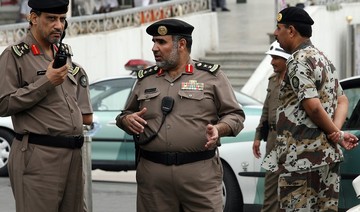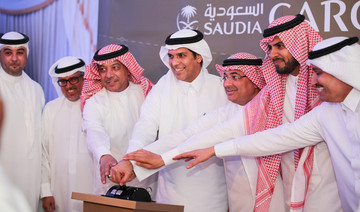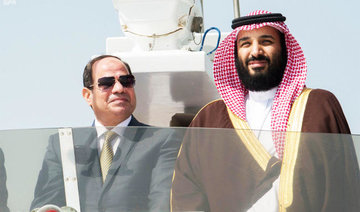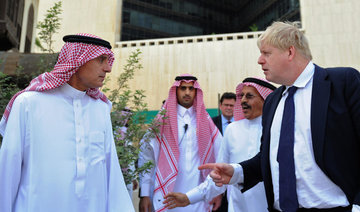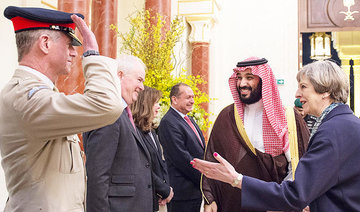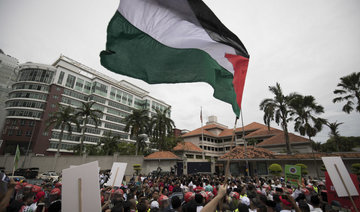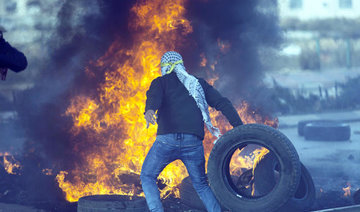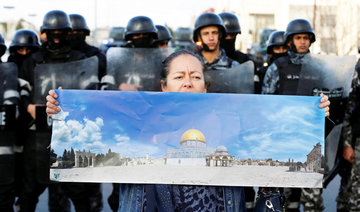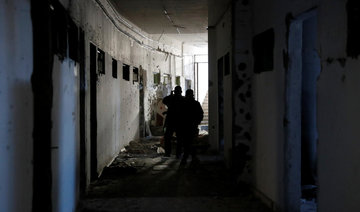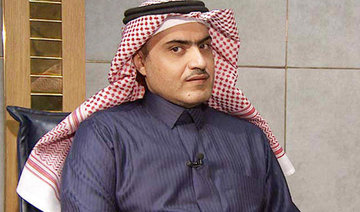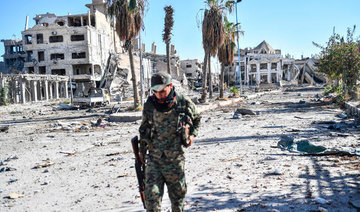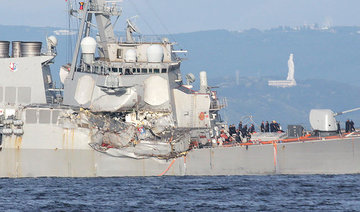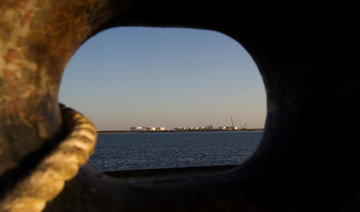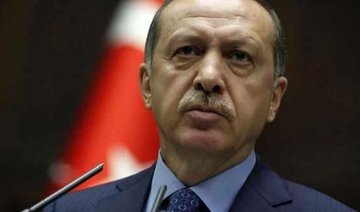MONTREAL: Cirque du Soleil will stage a show in Saudi Arabia for the first time later this month, the high-flying acrobatic troupe announced Monday.
The show will take place in the Saudi capital on Sept. 23 to coincide with the country's national day, public relations director Marie-Helene Lagace told AFP.
More than 80 artists will take the stage at the King Fahd International Stadium for the show, which will also be shown on Saudi state television. Cirque says it will be one of its biggest one-off productions ever.
About 250 costumes have been specially made to respect local traditions and conform to "the artistic standards for which we are known," Lagace said.
The announcement of Cirque du Soleil's appearance in Saudi Arabia was first made in Los Angeles in April, Lagace noted. But it was unclear whether the show would go on given the diplomatic tensions.
At the behest of Crown Prince Mohammed bin Salman, Saudi Arabia has reopened movie theaters and allowed women and men to attend some concerts together.
Cirque du Soleil heads to Saudi in special one-off show
Cirque du Soleil heads to Saudi in special one-off show

- More than 80 artists will take the stage at the King Fahd International Stadium for the show
- About 250 costumes have been specially made to respect local traditions
Saudi Arabia’s Crown Prince says Brexit opens UK for greater business opportunities with Kingdom
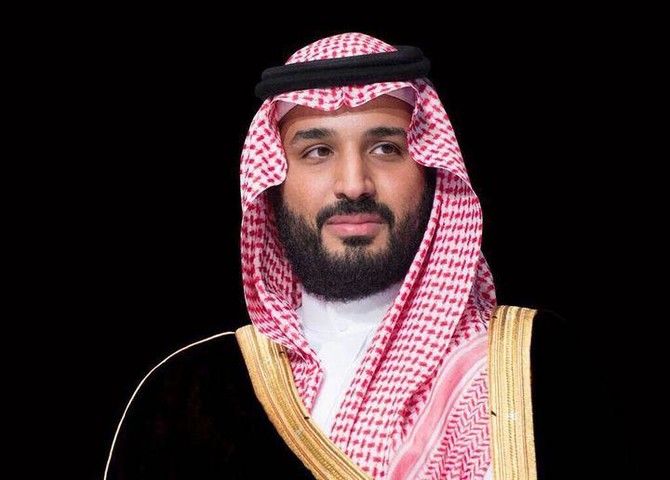
Prince Mohammed arrived in the UK from Cairo last night to begin the second leg of his first overseas tour since becoming heir to the throne.
In an interview with The Daily Telegraph newspaper, the crown prince said Brexit potentially freed up Britain to do more business with the Kingdom.
“We believe that Saudi Arabia needs to be part of the global economy,” he said. “People need to be able to move freely, and we need to apply the same standards as the rest of the world. After Brexit, there will be huge opportunities for Britain as a result of Vision 2030.”
He said the two countries enjoyed historic ties that dated back more than 100 years to the foundation of the Kingdom.
“We have a common interest that goes back to the earliest days of the relationship,” he said, adding: “Our relationship with Britain today is super.”
The 32-year-old crown prince, who is making his first official visit to Britain, has overseen a raft of reforms to modernize the Kingdom.
During the trip, he will meet with Prime Minister Theresa May, the Queen and other members of the British royal family.
A number of events have been scheduled, including a forum on business partnerships between the two countries and a discussion event at Chatham House.
The visit is expected to focus on defense, security and economic ties. The two sides will also review key bilateral and regional issues.
Billboards highlighting his UK visit have been erected in parts of the capital, Saudi state-news channel Al-Ekhbariya reported.
One shows the flags of the two countries with “United Kingdoms” written across the top. Another shows Crown Prince Mohammed with the slogan: “He is bringing change to Saudi Arabia.”
The Telegraph interview touched on the wide-reaching reforms in the country that include allowing Saudi women to drive, work and run businesses.
He said that while Vision 2030 worked to diversify the economy, the inclusion of women in driving that economy was essential to the long-term success of the project.
The crown prince said that global travel had made Saudis increasingly aware how other countries operated. Such an insight, he explained, had led to a change in the aspirations of the country’s younger population.
Currently, UK trade with Saudi Arabia and the other Gulf states accounts for 10 percent of total commercial transactions — more than the total amount of trade with China, the newspaper added, citing British diplomats.
Security and intelligence cooperation are expected to feature heavily during talks in the UK.
“The British and Saudi people, along with the rest of the world, will be much safer if you have a strong relationship with Saudi Arabia,” the crown prince said.
He said the job at hand was to promote a “more moderate Islam,” to counter the “extremists and the terrorists (who) are linked through spreading their agenda.”
Economic growth in Saudi Arabia would benefit the rest of the Middle East, which would help to defeat extremism.
He dismissed claims that the Saudi government’s current stance against Iran and Qatar could potentially provoke new regional conflict.
Britain was “very supportive” of the Kingdom’s concerns over Iran and other regional security issues, he said.
Before leaving Egypt, Crown Prince Mohammed visited Al-Azhar, the world’s leading seat of learning for Sunni Muslims.
Accompanied by Sheikh Ahmad Al-Tayyeb, the Grand Imam, he was shown the completed restoration work carried out on Al-Azhar Mosque.
The three-year project was financed by a grant from Saudi Arabia. The mosque, built in the 10th century, is now part of a sprawling university, which teaches Islam as well as secular subjects, and a nationwide network of schools.
Hundreds of Al-Azhar students met the crown prince and Egypt’s President, Abdel Fattah El-Sisi.
During the trip, Crown Prince Mohammed visited the main Christian cathedral in Cairo and met the head of the Coptic church. He also toured infrastructure projects and the Suez canal and attended a play at Cairo Opera House.
The two countries signed deals linked to investment funds and the building of a project in Sinai connected to Saudi Arabia’s Neom megacity project.
Two killed, dozens injured in Gaza City rallies and clashes
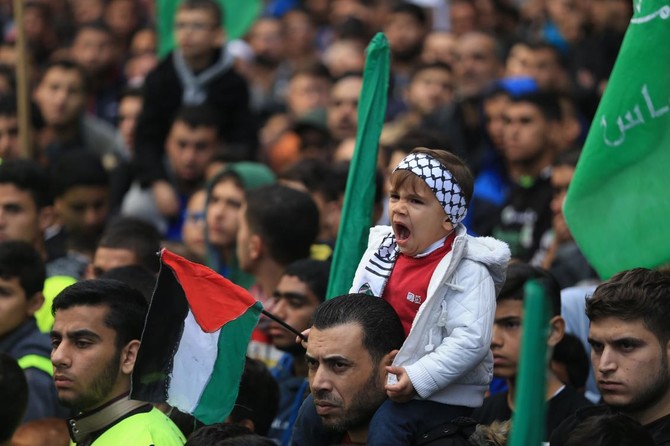
The Qassam Brigades, the military wing of Hamas, staged military parades in which masked men wearing military uniforms carried rifles and ammunition. The participants chanted slogans condemning America’s recent recognition of Jerusalem as the capital of Israel, and calling for a revolt to “liberate Jerusalem from occupation.”
Fathi Hammad, a member of the Hamas political bureau, told demonstrators in the northern Gaza Strip: “Today we declare an uprising against the occupation, and there are no half solutions.
“We call upon all the free people of the world to boycott America and Israel, and we call on the Arab and Islamic countries to take a serious stand and support our people.”
He added that a US Embassy in Jerusalem would be “an occupation entity like any other.”
He also called for the return of the Palestinian diaspora: “Isn’t it time for anyone who (has believed) in this alleged peace for more than a quarter of a century to return to embrace his people and to join us in the trench of resistance?”
In East Khan Younis in the south of the Gaza Strip, clashes broke out along the border with Israel. As Palestinian youths burned tires, Israeli forces reportedly responded with tear gas and live rounds. At least two Palestinians were killed and dozens were injured, some critically.
Senior Hamas official Ismail Radwan said during another march in Gaza City: “The Palestinian Authority must take urgent decisions, by declaring the failure of Oslo Accords and the end of that period, ending security coordination (with Israel) and permitting resistance in the West Bank.
“Hamas leaders declare the intifada for the freedom of the West Bank and Jerusalem, in response to President Trump’s decision,” he said. “Jerusalem will remain the capital of the state of Palestine.”
“Trump’s decision ended any mediation role the United States could play in the political process, destroyed the peace process, and destroyed any talk about a deal to bring peace to the region,” Osama Al-Qawasmi, a Fatah spokesman, said in a statement.
Friday sermons in the Gaza Strip addressed the issue of Jerusalem and the American decision to transfer its embassy there, and urged the rejection of any attempt to harm “the sanctity of the city.”
One of the protesters, Ahmed Al-Aksh, blamed “the weakness of the Palestinian people because of the division between Fatah and Hamas” for the US decision, “as well as the preoccupation of Arab countries with internal issues.”
Now, Al-Aksh said: “We must go out to the streets and face that decision.”
US-backed Syrian force declare victory over Daesh in Raqqa
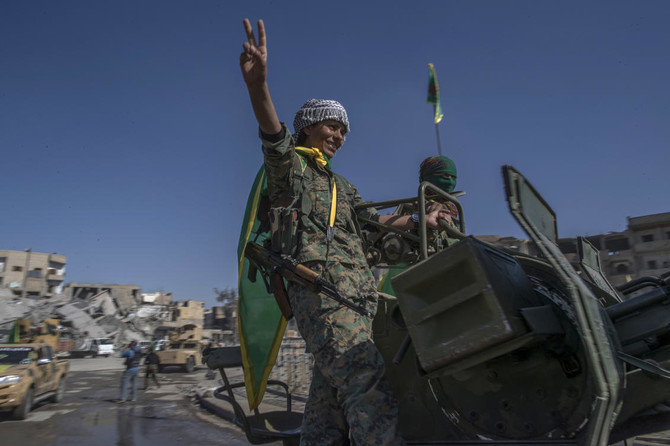
At a press conference held inside the city Friday, the Kurdish-led force known as the Syrian Democratic Forces formally handed over administration of the devastated northern city to a council made up of local officials and tribal leaders.
In a highly symbolic move, the press conference was held inside the city’s sports stadium which Daesh militants had turned into an arms depot and a huge prison where they incarcerated and tortured their opponents.
“Our victory is one against terrorism, and the liberation of Raqqa marks the latest chapter in the fight against terrorists in Syria,” said Talal Sillo, a spokesman and senior SDF commander.
Standing before a backdrop of shattered buildings, Sillo urged the international community and aid organizations to assist with the city’s reconstruction.
Associated Press drone footage from Raqqa showed the extent of devastation caused by weeks of fighting between Kurdish-led forces and Daesh and thousands of bombs dropped by the US-led coalition.
Footage from Thursday shows the bombed-out shells of buildings and heaps of concrete slabs lay piled on streets littered with destroyed cars. Entire neighborhoods are seen turned to rubble, with little sign of civilian life.
The video showed entire blocks in the city as uninhabitable with knocked-out walls and blown-out windows and doors, while some buildings had several stories turned to piles of debris. The stadium that was used as an arms depot and prison by the extremists appears to have suffered less damage compared with surrounding buildings.
“We call upon all countries and peace-loving forces and all humanitarian organizations to participate in rebuilding the city and villages around it and help in removing the scars of war that were inflicted by the (Daesh) group,” Sillo said.
Sillo said 655 local and international fighters lost their lives during the four-month battle for Raqqa.
Long before the ground offensive by the Syrian Democratic Forces began in Raqqa in early June, warplanes pounded the city for months.
The US-backed Kurdish-led SDF announced Tuesday they have driven Daesh militants out of the city after weeks of fighting.
The fall of Raqqa marks a major defeat for Daesh, which has seen its territories steadily shrink since last year. Daesh took over Raqqa, located on the Euphrates River, in January 2014, and transformed it into the epicenter of its brutal rule.
US fires warning shots to stop Iran navy vessel in Gulf

JEDDAH: A US Navy ship fired warning shots when an Iranian vessel in the Gulf came within 150 yards (137 meters) of it on Tuesday, in the first such incident since President Donald Trump took office, US officials said.
The last major incident was earlier in January, though a US vessel fired a flare in March when a US Navy ship was forced to change course after multiple fast-attack vessels from Iran’s Revolutionary Guard Corps (IRGC) came too close.
In a statement to Reuters, US Naval Forces Central Command said the patrol craft, named USS Thunderbolt, fired the warning shots in front of the Iranian vessel after it ignored radio calls, flares and the ship’s whistle.
The Iranian vessel was from IRGC, the statement said, adding that it stopped its unsafe approach after the warning shots were fired.
A US official, speaking on the condition of anonymity, told Reuters that the Iranian boat was armed but that the weapons were unmanned.
The USS Thunderbolt was accompanied by a number of other vessels, including those from the US Coast Guard.
Oubai Shahbandar, a Syrian-American analyst told Arab News that the Iranian objective is to take control of the strategic waterways in the Gulf.
“We saw multiple acts from the IRGC against the US Navy under the Obama administration. The difference now is that under Trump, the US Navy seems to have been authorized to push back harder against IRGC naval threats,” said Shahbandar.
The Iranian navy issued a statement on Tuesday noting that an American “battleship” moved toward one of its patrol boats in international waters in the northern Gulf and fired two shots in the air, according to Sepah News, the official news site of the IRGC.
In its annual Country Reports on Terrorism, the US State Department this week said Iran was the world’s “foremost” state sponsor of terrorism in 2016, a dubious distinction the country has held for many years.
It said Tehran was firm in its backing of proxies that have destabilized Iraq, Syria and Yemen.
The report added that Iran continued to recruit in Afghanistan and Pakistan for Shiite militia members to fight in Syria and Iraq, and Iranian support for Hezbollah was unchanged.
Tehran used a unit of the IRGC, the Quds Force, “to implement foreign policy goals, provide cover for intelligence operations and create instability in the Middle East,” the report said.
KSA seeks to solve housing crisis with 3D-printed homes
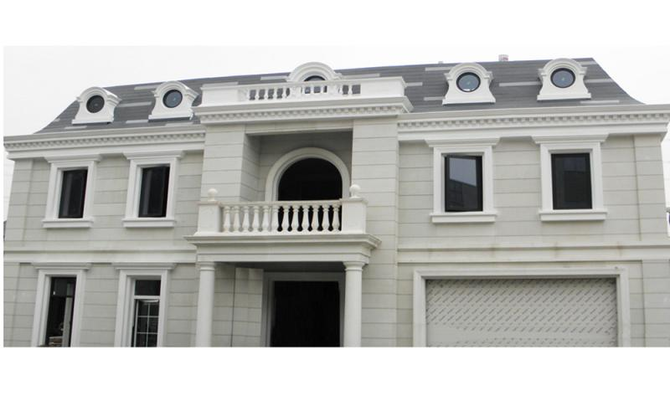
Saudi officials met with representatives of WinSun Decoration Design Engineering, a Chinese company that specializes in 3D printing, to explore the possibilities of this technology and to discuss how it could be used by the Ministry of Housing and other government bodies, as well as by research and development companies.
The firm gave a presentation on its skills and showed models for houses that have already been built in a number of countries, in addition to a building that was opened in the UAE last May. They also shared information on the first 3D-printed building in the Gulf — Future Office.
Following the high-profile meeting, it was not clear whether a deal will be signed to make this technology part of the housing crisis solution in Saudi Arabia.
The company’s representatives, however, said the use of 3D technology decreases the cost of labor by 70 percent and decreases construction waste by 60 percent.
The technology mixes waste construction material, glass, steel and cement together to form the houses, which is then sprayed on each surface to form a solid wall. According to the company, a unit can be printed in one day, and a small house can be built in just 30 minutes.
Dubai is the first city in the Gulf to use this technology. It says by 2030, 25 percent of its homes will be 3D printed.


